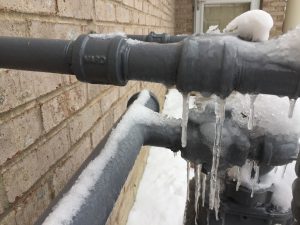Essential Strategies for Preventing Frozen Plumbing in Winter
Essential Strategies for Preventing Frozen Plumbing in Winter
Blog Article
Right here further down you can locate some first-rate help and advice on the subject of Winter Plumbing Precautions: Preventing Frozen Pipes.

Winter can ruin your plumbing, especially by freezing pipes. Below's just how to avoid it from occurring and what to do if it does.
Introduction
As temperatures decline, the threat of frozen pipes rises, possibly causing costly fixings and water damage. Comprehending just how to avoid icy pipelines is vital for house owners in cold climates.
Comprehending Icy Pipelines
What creates pipelines to ice up?
Pipes freeze when subjected to temperatures listed below 32 ° F (0 ° C) for prolonged durations. As water inside the pipelines ices up, it expands, putting pressure on the pipe walls and potentially causing them to burst.
Threats and problems
Icy pipelines can lead to water supply disruptions, residential property damages, and costly repair work. Burst pipelines can flood homes and trigger comprehensive structural damages.
Indications of Frozen Pipes
Recognizing frozen pipes early can stop them from bursting.
How to recognize frozen pipes
Search for decreased water flow from faucets, uncommon smells or sounds from pipelines, and visible frost on exposed pipes.
Prevention Tips
Insulating prone pipelines
Cover pipes in insulation sleeves or use warmth tape to secure them from freezing temperatures. Focus on pipelines in unheated or outside areas of the home.
Heating strategies
Keep indoor areas sufficiently heated, specifically areas with pipes. Open closet doors to enable warm air to circulate around pipes under sinks.
Safeguarding Outdoor Plumbing
Yard hoses and outdoor faucets
Disconnect and drain yard pipes before winter months. Set up frost-proof spigots or cover exterior faucets with protected caps.
What to Do If Your Pipelines Freeze
Immediate actions to take
If you believe frozen pipelines, keep taps available to alleviate stress as the ice thaws. Utilize a hairdryer or towels taken in hot water to thaw pipelines slowly.
Long-Term Solutions
Structural changes
Consider rerouting pipes away from outside wall surfaces or unheated areas. Add additional insulation to attics, basements, and crawl spaces.
Upgrading insulation
Purchase high-quality insulation for pipelines, attic rooms, and wall surfaces. Correct insulation aids keep regular temperature levels and lowers the threat of icy pipes.
Final thought
Avoiding frozen pipelines calls for positive steps and quick feedbacks. By recognizing the causes, signs, and safety nets, house owners can shield their pipes during winter.
6 Proven Ways to Prevent Frozen Pipes and Protect Your Home
Disconnect and Drain Garden Hoses
Before winter arrives, start by disconnecting your garden hoses and draining any remaining water. Close the shut-off valves that supply outdoor hose bibs and leave the outdoor faucet open to allow any residual water to drain. For extra protection, consider using faucet covers throughout the colder months. It’s also important to drain water from any sprinkler supply lines following the manufacturer’s directions.
Insulate Exposed Pipes
Insulating your pipes is an effective way to prevent freezing. Pipe insulation is readily available at home improvement stores and is relatively inexpensive. Pay close attention to pipes in unheated areas such as the attic, basement, crawl spaces, or garage. Apply foam insulation generously to create a buffer against the cold. You can also wrap your pipes in heat tape or thermostat-controlled heat cables for added warmth.
Seal Air Leaks
Inspect your home for any cracks or openings that could let in cold air. Seal any holes around the piping in interior or exterior walls, as well as the sill plates where your home rests on its foundation. Additionally, make sure to keep your garage door closed unless you’re entering or exiting. Leaving it open creates a significant air leak that can lead to frozen pipes.
Allow Warm Air Circulation
During cold snaps, it’s essential to allow warm air to circulate evenly throughout your home. Leave interior doors ajar to promote better airflow. Open kitchen and bathroom cabinets to help distribute heat consistently around the rooms. If you have small children or pets, be sure to remove any household chemicals or potentially harmful cleaners from open cabinets for safety.
Let Faucets Drip
A small trickle of water can make a big difference in preventing ice formation inside your pipes. When temperatures drop significantly, start a drip of water from all faucets served by exposed pipes. This continuous flow helps prevent the water from freezing. Additionally, running a few faucets slightly can relieve pressure inside the pipes, reducing the chances of a rupture if the water inside does freeze.
https://choateshvac.com/6-proven-ways-to-prevent-frozen-pipes-and-protect-your-home/

As a passionate person who reads about How to prepare your home plumbing for winter weather, I assumed sharing that piece of content was a good thing. I beg you take the opportunity to share this content if you liked it. We truly appreciate your readership.
Schedule Free Estimate Report this page